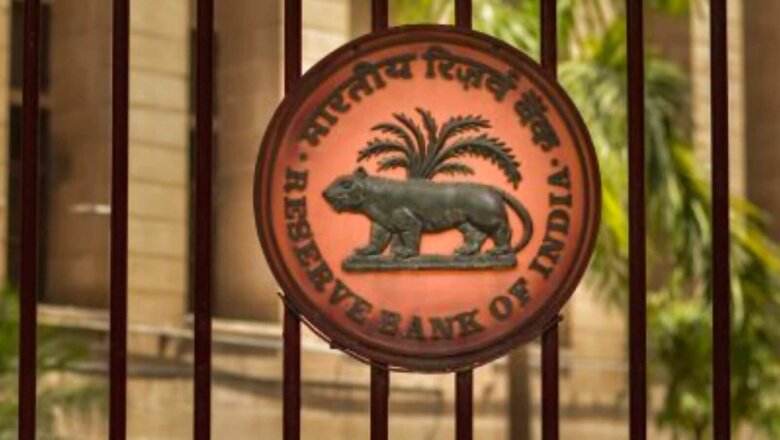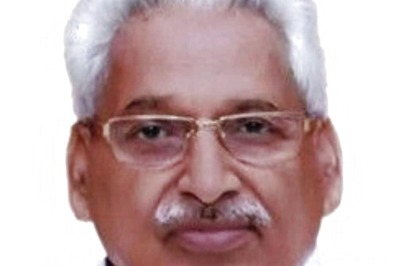
views
It is the goal of every government to achieve the fiscal deficit target and the Centre is set to meet its target for the financial year 2021-22. The government had fixed a fiscal deficit target of Rs 15.07 lakh crore or 6.8 per cent of GDP for FY22 for stronger and sustainable growth. The target was further revised to Rs 15.91 lakh crore or 6.9 per cent of GDP. The Centre’s fiscal deficit during April-February 2022, according to monthly data of the Controller General of Accounts, stood at Rs 13.17 lakh crore. It is 87.4 per cent of the budget estimate (BE) and 82.7 per cent of the revised estimate (RE). The fiscal deficit was 76 per cent of the RE during the corresponding period of the last fiscal.
Total receipts of the government in the first 11 months were Rs 18.27 lakh crore. It is 84 per cent of the RE of Rs 21.79 lakh crore. The total collection during the same period in FY21 was about 88 per cent of RE of Rs 15.55 lakh crore. During the same period, the total expenditure of the Centre was Rs 31.44 lakh crore against the RE of Rs 37.70 lakh crore. It stood at 83.4 per cent of the RE as compared to the corresponding ratio of 81.7 per cent during 2020-21. This is despite the fact that the total receipts of FY22 were a little lower and total expenditure was a little higher compared to FY21. But the fiscal position of FY22 is much better than FY21.
Direct and Indirect Tax Collections
We are at a better position in terms of fiscal management due to tax buoyancy in both direct and indirect taxes and low interest rate. The Goods and Services Tax collection was an average Rs 1.24 lakh crore per month in FY22. According to PIB, the collection for the month of March was an all-time high of Rs 1.42 lakh crore. The average monthly gross GST collection for Q4 FY22 was Rs 1.38 lakh crore. It was Rs 1.10 lakh crore in the first quarter, Rs 1.15 lakh crore in the second quarter and Rs 1.30 lakh crore in the third quarter.
On the direct tax front, according to the notification of PIB, the government has collected net direct taxes of Rs 13.63 lakh crore – comprising Rs 7.19 lakh crore from corporation tax and Rs 6.41 lakh crore from personal income tax during April 1 to March 16. It is 123 per cent of the BE of Rs 11.08 lakh crore and 109 per cent of the RE of Rs 12.50 lakh crore in the fiscal 2022. The net direct tax collection in 2022 has registered a steep growth of 48.41 per cent over the corresponding period of financial year 2020-21. The growth was 42.5 per cent in 2019-20 and 34.96 per cent in 2018-19 during the same period. The net direct tax collection was Rs 9.18 lakh crore in FY21, Rs 9.57 lakh crore in FY20, and Rs 10.09 lakh crore in FY19.
Worrying Points
On the flip side, the performance with regard to disinvestment was not satisfactory. The government had set the budget target from disinvestment of CPSUs (central public sector units) at Rs 1.75 lakh crore which was further revised to Rs 0.78 lakh crore. However, as per the website of DIPAM, actual receipt was Rs 0.14 lakh crore – only 8 per cent of BE and about 18 per cent of the RE. Even the 18 per cent realised was due to the proceeds from monetisation of national highways, worth Rs 1,011 crore. The under-realisation of disinvestment proceeds is a matter of concern because in the last couple of years it has become a crucial component of fiscal maths.
ALSO READ | No Dearth of Privatisation Critics but Govt Must Show Courage, Go Ahead with PSU Sale in 2022
The interest rate has a big influence on the fiscal limits as the RBI has kept it fixed at 4 per cent since May 2020. Because of this the debt service cost was also low since the Centre’s major debt is from internal sources. As per Budget 2022, debt from internal sources is 96.8 per cent against the total debt of Rs 135.87 lakh crore.
The most worrying thing right now is the ongoing conflict between Russia and Ukraine and the US Federal Reserve’s plan to hike interest rates. It is a major blow for the economy. It will hurt growth and discourage investment. It will disrupt the supply chain resulting in a leap in prices. Inflation has already reached an 8-month high of 6.07 per cent in February. A higher inflation may not only increase import cost and widen trade balance, it will affect growth as well. The US Fed Reserve’s plan to hike interest rates will impact investments in India. So far this year, foreign investors have been net sellers of about Rs 1.27 lakh crore. This will appreciate the value of US$ while depreciating the Indian rupee.
In such a situation, all eyes are on the Monetary Policy Committee (MPC) meet of the current fiscal. Whether RBI maintains the status quo on rates or raises them to address both the challenges remains to be seen. However, an increase in interest rate will not only graze demand that is still less than pre-COVID level, it will also increase cost of debt for the government. An increase in the cost of debt will affect fiscal mathematics of the government for FY23.
It is expected that the RBI will maintain equilibrium through interest rates for curbing inflation, retaining investors, keeping the government’s debt cost on the lower side and pushing growth.
The author teaches at ITS Ghaziabad. He can be followed on Twitter @meetdrvinay. The views expressed in this article are those of the author and do not represent the stand of this publication.
Read all the Latest Opinion News and Breaking News here


















Comments
0 comment